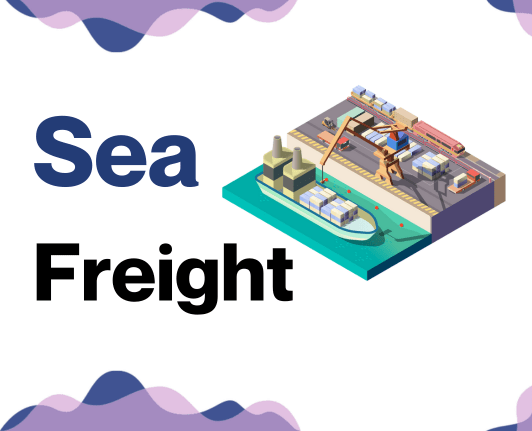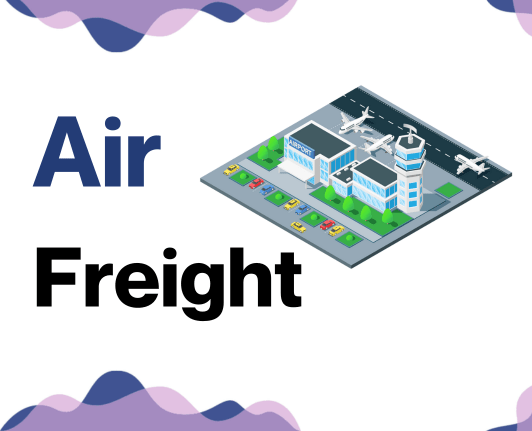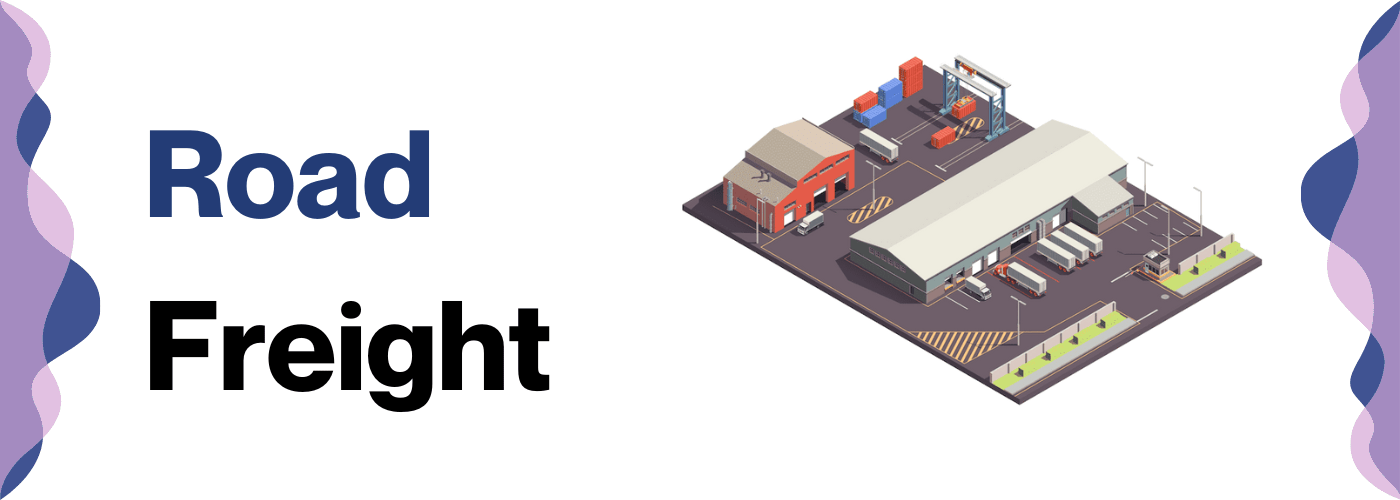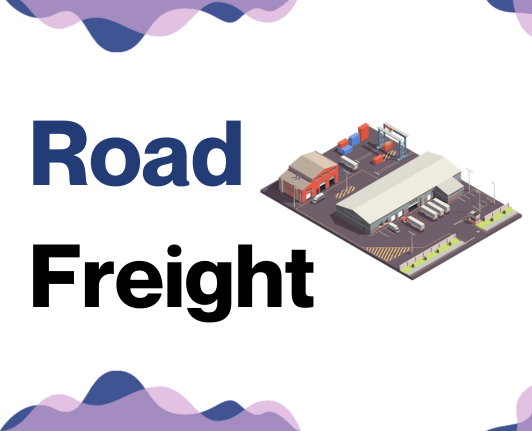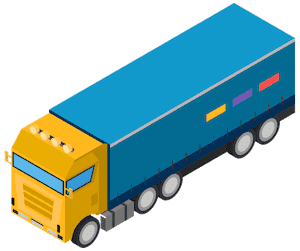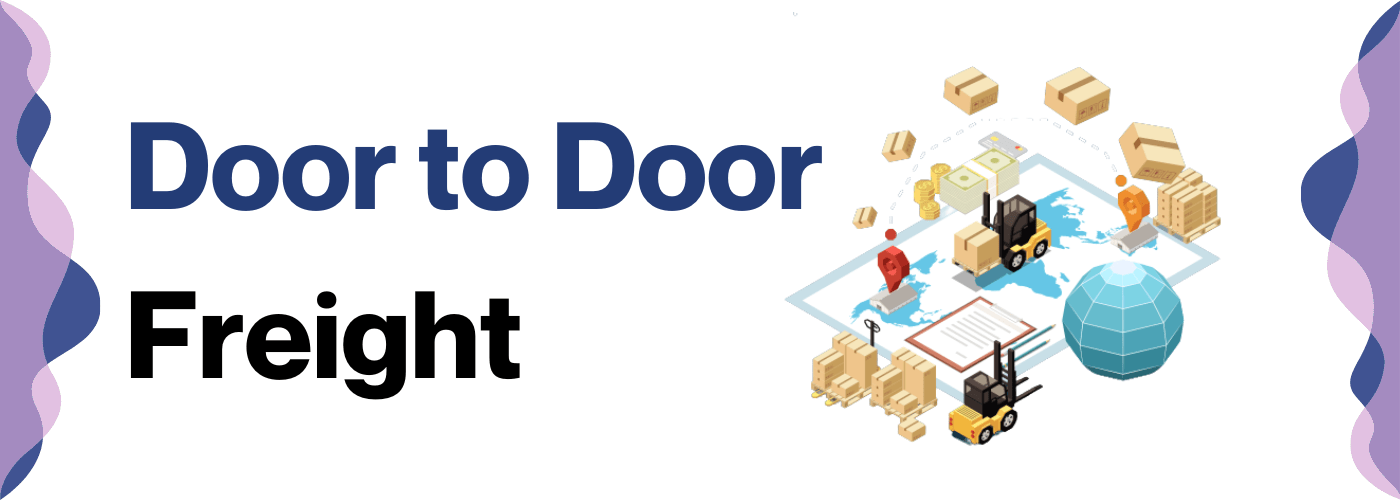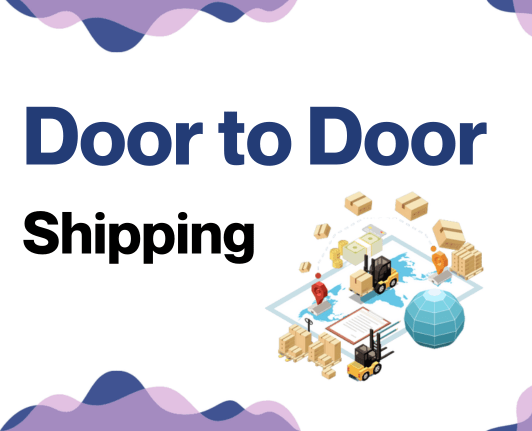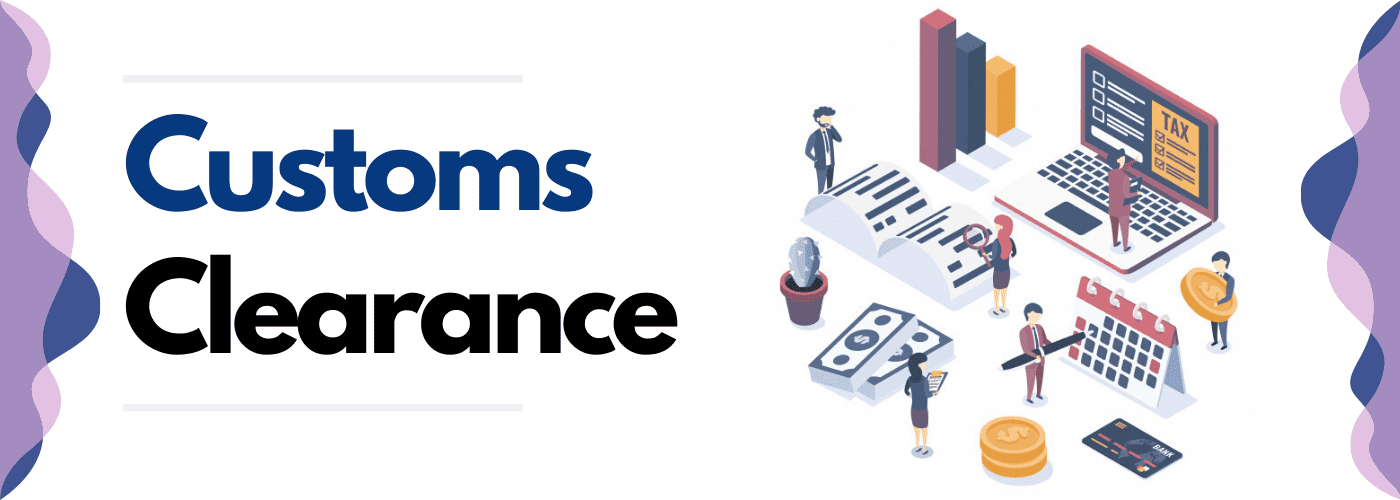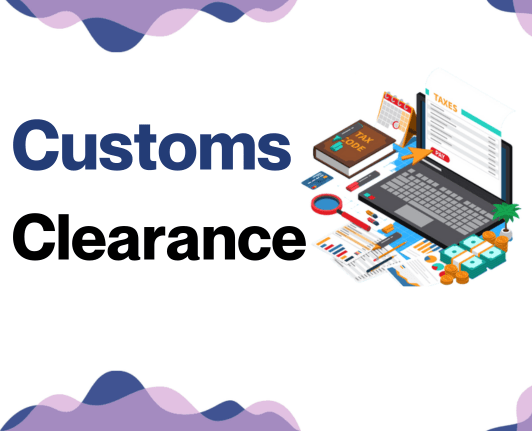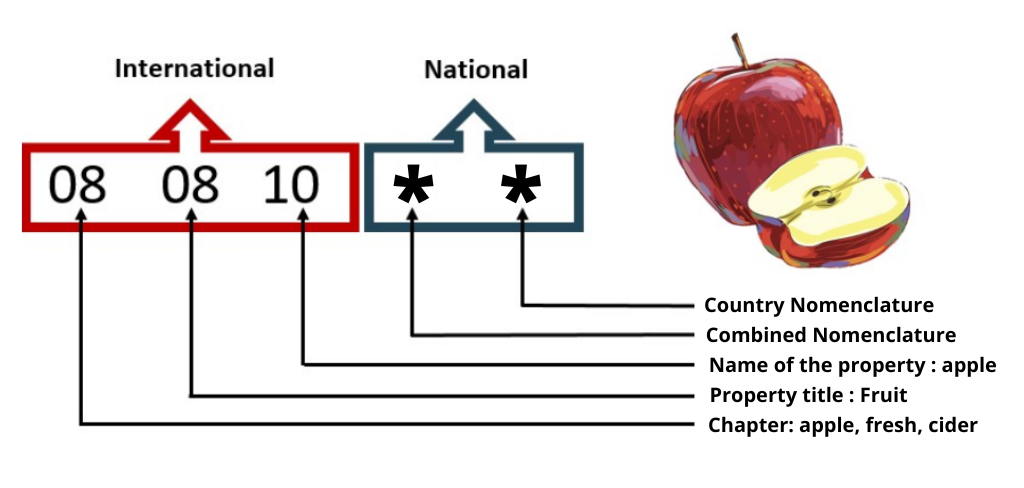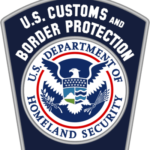Did you hear about the shipping container that went to a party? It really 'unloaded'! Fun aside, mastering global shipping from the US to the Netherlands is no laughing matter. Crucial factors including understanding rates, gauging transit times, and complying with customs regulations can quickly muddy the waters.
But don't worry, this guide has you covered! Expect to unravel freight options from air to sea, decode the enigma of customs clearance, and get well-versed with duties and taxes. Whether you're a novice or a seasoned shipper, we'll furnish you with tailored advice to maximize your business success. If the process still feels overwhelming, let DocShipper handle it for you! Entrusting your transportation needs to us means transforming these daunting challenges into smooth-sailing success.
Table of Contents
ToggleWhich are the different modes of transportation between US and Netherlands?
Transporting goods from the vast expanses of the United States to the intricate waterways of the Netherlands is much like a moving jigsaw puzzle. Oceans, continents, and borders play a big part in selecting the right shipping method. Imagine choosing a path for a marathon - you'd consider distance, terrain, and your own strengths.
Similarly, the distance across the Atlantic, restrictive international borders, and your unique shipping needs are key aspects to consider. Amidst these elements, sea and air freight emerge as winners. The right choice? That depends on your cargo's nature and urgency. It's a carefully planned logistics symphony!
How can DocShipper help?
Looking to ship goods from the US to the Netherlands? Let DocShipper handle the complexities. We're seasoned in all aspects of global logistics, handling customs clearance, duties, transportation, and administrative hurdles for you. Reach out for a free estimate in under 24 hours, or instantly connect with our consultants at no cost. Let us simplify your shipping journey.
DocShipper Tip: Sea freight might be the best solution for you if:
- You are shipping large volumes or bulky items, as sea freight offers the most space at a cost-effective rate.
- Your cargo doesn't have an urgent deadline, as sea freight typically has longer transit times compared to air or rail.
- Your shipping routes are between major ports, allowing you to leverage the extensive global network of sea shipping lanes.
Sea freight between US and Netherlands
America and the Netherlands share a vibrant trade relationship, with potential to grow further. At the heart of it is ocean freight, linking vital ports like Los Angeles, New York, and Houston in the US to Rotterdam and Amsterdam in the Netherlands. Sea freight stands as a reliable, cost-effective option for businesses looking to move high-volume cargo, though the pace might test your patience.
However, the path from US to the Netherlands isn't always smooth sailing. Shippers often hit roadblocks in customs clearance, paperwork glitches, and unforeseen delays, sort of like the dreaded traffic jam ruining a road trip. Yet with up-to-date knowledge of best practices and adherence to specifications, these challenges can be minimized. Just like knowing the best routes can make that road trip more enjoyable.
In this section, we'll dive deeper into these complexities and how to navigate them, turning you into a sort of captain of your own shipping journey, minus the sea-sickness. Get ready to chart a course through the world of transatlantic trade.
Main shipping ports in US
Port of Los Angeles
Location and Volume: Primely located in Southern California, this port is a critical node for Asia-America trade, catering to a shipping volume of over 7.1 million TEU in 2023.
Key Trading Partners and Strategic Importance: Major trading partners include China, Hong Kong, Japan, Vietnam, and Taiwan. It moves 40% of all U.S. imports, playing a cardinal role in international trade.
Context for Businesses: If you're looking to tap into the large Asian market or expand your West Coast distribution, Port of Los Angeles might be your ideal fit given its high capacity and extensive connectivity.
Port of Long Beach
Location and Volume: Situated adjacent to the Port of Los Angeles, this is the second busiest container port in the U.S, processing close to 5.8 million TEU in 2023.
Key Trading Partners and Strategic Importance: The port primarily engages in trade with East Asia and has been a driving force in the U.S. import-export industry.
Context for Businesses: Considering the extensive trade with the Asian market and its robust infrastructure, Port of Long Beach can be a strategic choice for businesses requiring frequent and high-volume shipments.
Port of New York and New Jersey
Location and Volume: Based on the East Coast, this port is the busiest on the eastern seaboard, handling a volume of over 725,479 TEU in 2023.
Key Trading Partners and Strategic Importance: China, India, Germany, and Italy are its major trading partners, with a significant part of its functions being automotive shipping and cargo handling.
Context for Businesses: If the European or Indian market is your target, you might find the Port of New York and New Jersey an invaluable asset due to its strategic location and diverse cargo handling.
Port of Savannah
Location and Volume: Located in the southeastern U.S., this port is a leading hub for agri-products, processing 684,806 TEU in 2023.
Key Trading Partners and Strategic Importance: This port serves key trading partners like China, Germany, and Vietnam. It has the largest single-terminal container facility of its kind in North America.
Context for Businesses: If you're in the business of agriculture, retail, or manufacturing, Port of Savannah's extensive connections might be ideal for sourcing and distribution.
Port of Houston
Location and Volume: Positioned on the Gulf Coast in Texas, it is one of America's busiest ports, managing 2.5 million TEU in 2020. It is particularly notable for its role in oil and gas shipping.
Key Trading Partners and Strategic Importance: Main trading partners include Mexico, China, and Brazil. It is strategically vital for the export of petroleum products.
Context for Businesses: If your business centers on energy or raw materials, the Port of Houston’s expertise in these areas may give you an operational advantage.
Port of Seattle
Location and Volume: Based in the Pacific Northwest, it handled 3.74 million TEU in 2023 and serves as a vital link for trade with Asia.
Key Trading Partners and Strategic Importance: Its key trading partners include China, Japan, and South Korea. The port’s location makes it a key player in the shrimping and fishing industries.
Context for Businesses: If you're a seafood business or looking to penetrate East Asian markets, the Port of Seattle might be your best bet given its strategic location and seafood handling capabilities.
Main shipping ports in Netherlands
Port of Rotterdam
Location and Volume: Positioned at the mouth of the Nieuwe Maas channel leading into the Rhine-Meuse-Scheldt delta at the North Sea, the Port of Rotterdam is the largest port in Europe and twelfth largest in the world. It boasts a significant shipping volume of around 15.3 million TEUs annually.
Key Trading Partners and Strategic Importance: This port has a strategic location as the gateway to a massive consumer market given its proximity to many of Europe's biggest economies. It also maintains strong trade relationships with countries such as China, United States, Russia, and the United Kingdom.
Context for Businesses: If you're planning to penetrate the enormous European market, the Port of Rotterdam, given its deep-draft access and well-established logistics infrastructure, can be a vital hub in your shipping strategy.
Port of Amsterdam
Location and Volume: Nestled in the North Sea Canal, the Port of Amsterdam comes in second as the largest Dutch port. Handling approximately 97.4 million metric tons of cargo each year, it's a central touchpoint for bulk and general cargo.
Key Trading Partners and Strategic Importance: Acting as a paramount entry point for energy products into Europe, the port counts countries such as Russia, Scandinavia, and the UK amongst its key trading ties. It also plays an integral role in the European petroleum industry.
Context for Businesses: If your cargo involves bulk goods or petroleum products, the Port of Amsterdam's specialized facilities may benefit you.
Port of Groningen
Location and Volume: Situated in the northeast of the Netherlands, Groningen is a cluster of autonomous ports handling more than 1.8 million TEUs per year.
Key Trading Partners and Strategic Importance: The port's primary focus lies in energy and related industries, establishing major trade links with European countries such as Germany, and Scandinavian nations. It's also a frontrunner in green and renewable energy.
Context for Businesses: For businesses in the sustainable energy sector, Groningen's forward-thinking approach and facilities can help leverage your environmental credentials.
Port of Zeeland
Location and Volume: In South-West Netherlands lies the significant Port of Zeeland, handling over 34 million tons of goods annually across various sectors.
Key Trading Partners and Strategic Importance: The port has substantial trade connections with Germany, Belgium, and other parts of Europe. Strategically, its value lies in its wide array of cargo handling, including agri-food, raw materials, and manufacturing.
Context for Businesses: If your business spans across different cargo-handling needs, the Port of Zeeland's versatility can help streamline your logistics.
Port of Moerdijk
Location and Volume: Located between Rotterdam and Antwerp, the Port of Moerdijk is a smaller yet dynamic Dutch hub, managing roughly 18,000 TEUs each year.
Key Trading Partners and Strategic Importance: Its central position establishes strong ties with important European markets, with primary commodities of metal, building materials, and chemicals.
Context for Businesses: The port's central location and multi-modal access make it a strategical choice for businesses targeting the Benelux region.
Port of Delfzijl
Location and Volume: Located near Germany's border, Delfzijl is part of the Groningen Seaports and manages a large volume of chemicals and dry cargo.
Key Trading Partners and Strategic Importance: Significant trading alliances lie with Germany and other neighboring countries, focused on agriculture, chemical industry, and recycling companies.
Context for Businesses: If your business involves chemicals or recycled goods, consider Delfzijl for its specialized handling and proximity to the Northern European markets.
Should I choose FCL or LCL when shipping between US and Netherlands?
Choosing between Full Container Load (FCL) and Less than Container Load (LCL) options is like selecting the best vehicle for a cross-country road trip. It's critical, as it directly influences your journey's cost, timeframe, and smoothness. This choice for your US-Netherlands shipping could be the difference between landing a business deal or losing one. Equip yourself with the necessary information to choose wisely and achieve seamless sea freight goodness. Let's sail into understanding the nuances of FCL and LCL to help you chart the best course for your cargo's voyage.
LCL: Less than Container Load
Definition: Less than Container Load (LCL) shipping, also known as groupage, refers to a freight forwarding method where several shippers share the same container space for shipping smaller amounts of goods.
When to Use: LCL is an ideal option when your cargo volume is less than 13 to 15 cubic meters (CBM). This alternative is notably cost-efficient and flexible for low-volume shipments, as it negates the need to pay for a full container.
Example: For instance, let's assume you're a furniture dealer who needs to ship 20 armchairs from Boston to Rotterdam. Each chair is 1 CBM, totaling 20 CBM. However, a full 20-foot container accommodates about 60 CBM. In this context, opting for LCL shipment can save significant costs as you only pay for the space you use, in this case, 20 CBM.
Cost Implications: When sending an LCL freight, you only pay for the exact volume or weight of your cargo that occupies the container, making it a cost-effective solution for smaller shipments. However, keep in mind, while cost per unit is generally lower than Full Container Load (FCL), it can potentially increase with larger volumes due to the extra handling required.
FCL: Full Container Load
Definition: FCL or Full Container Load shipping is a type of sea freight transport where a company fills and books the entire container, meaning it belongs exclusively to them. This ensures safety as your goods remain sealed in an FCL container from the time it leaves the distributor to its arrival at the destination.
When to Use: Opt for FCL shipping when your cargo volume exceeds 13, 14, or 15 cubic meters (CBM). It's ideal since it's cheaper for high-volume shipments due to economies of scale. For instance, a typical 20'ft FCL container or a 40'ft container can hold approximately 28-30 CBM or 58-68 CBM respectively.
Example: Assume a company in the U.S shipping 20 CBM of manufacturing equipment to the Netherlands. In this case, FCL shipping will be the most cost-effective and secure choice, given the volume and value of the equipment.
Cost Implications: Although FCL shipping quotes may initially appear higher than LCL (Less Container Load), the cost per unit becomes cheaper as the volume of your shipment increases. That's because the cost of an FCL container is fixed, regardless of whether it's full or not. Therefore, the more goods you ship, the more you can save on per-unit costs.
Unlock hassle-free shipping
Looking to transport goods between the US and the Netherlands hassle-free? Meet DocShipper, your expert freight forwarder. We simplify complex decisions like choosing between consolidation and full container shipping. Our ocean freight experts consider your cargo type, budget, and time constraints to recommend the best option. Don't just ship – ship smart with DocShipper. Reach out today for a free estimation of your shipping needs. We're here to steer your business forward.
How long does sea freight take between US and Netherlands?
The average journey time for sea freight between the US and the Netherlands can range from approximately 10 to 40 days, depending on various factors. Transit times are not fixed and can vary depending on the specific ports used, the weight and nature of the goods. Hence, for an accurate estimate tailored to your specific requirements, it's recommended to contact a freight forwarder like DocShipper.
How much does it cost to ship a container between US and Netherlands?
Estimating the shipping cost for a container from the US to the Netherlands isn't as straightforward as popping numbers into a calculator. It's greatly influenced by diverse factors including the Point of Loading, destination, your selected carrier, type of goods, and those unpredictable market fluxes each month. While we can establish a ballpark figure between $50 and $100 per CBM, bear in mind this huge variability. At the crux of all of this complexity, though, our shipping specialists are committed to navigate these ocean freight rates and provide you with the most viable quote for your unique scenario, bespoke to your requirements and ensuring cost-effectiveness.
Special transportation services
Out of Gauge (OOG) Container
Definition: This is a type of sea freight shipping option designed for cargo that exceeds the standard measurements of containers, hence being labeled, Out of Gauge Cargo.
Suitable for: Its larger size and flexibility makes it suitable for oversized cargo, heavy machinery, or overly long items which do not fit within standard shipping containers.
Examples: Examples of goods suitable for this type of cargo include construction machinery, factory equipment, and wind turbines.
Why it might be the best choice for you: If your business deals with large, heavy goods, OOG container shipping could be the most efficient and safest method to transport your goods from the US to the Netherlands.
Break Bulk
Definition: This form of shipping involves disassembling the cargo, transporting it as separate pieces, and reassembling those at the destination. It's referred to as break bulk because the goods do not use standard shipping containers but are loaded individually.
Suitable for: It's suitable for large items that can't fit in a container, like woods, metals, or heavy machinery.
Examples: Specific goods that fall under this category might include timber, scrap metal, and large vehicles.
Why it might be the best choice for you: If your cargo is extremely large or oddly shaped and it's not time-critical, break bulk can be a cost-effective option without size or weight restrictions.
Dry Bulk
Definition: Dry bulk shipping refers to the transportation of homogenous un-packaged goods which are typically dumped or poured as a loose cargo load.
Suitable for: Often commodities like coal, grain, or minerals that are shipped in large quantities use this method.
Examples: If your business trades in resources like iron ore, grains, or sugar, then Dry Bulk shipping is the best way to transport such commodities in massive amounts.
Why it might be the best choice for you: It offers an economical method to transport commodities in bulk from the US to the Netherlands without packaging costs.
Roll-on/Roll-off (Ro-Ro)
Definition: Roll-on/Roll-off, also known as Ro-Ro, involves shipping vehicles which are driven on and off a ro-ro vessel under their own power or by using a platform vehicle.
Suitable for: If you're shipping mobile goods like cars, trucks, or tractors, Ro-Ro is the way to go.
Examples: Your business might transport vehicles, semi-trailer trucks, trailers, or railroad cars using Ro-Ro.
Why it might be the best choice for you: It's one of the simplest and most affordable ways to ship wheeled cargo making your vehicle shipping process uncomplicated and straightforward.
Reefer Containers
Definition: These are refrigerated containers used for shipping perishable commodities that require temperature-controlled handling.
Suitable for: Your business might need it if you ship fruits, vegetables, dairy products, or other goods that need to be refrigerated or frozen.
Examples: Businesses dealing in fresh flowers, pharmaceuticals, or frozen goods like meat, seafood would use Reefer containers.
Why it might be the best choice for you: Reefer containers ensure that your temperature-sensitive goods will arrive in the Netherlands in the same quality as they were shipped from the US.
At DocShipper, we understand that each shipping need is unique, and with our expertise in international logistics, we're here to help you navigate these options. Feel free to contact us for your shipping needs. You can get a free shipping quote in less than 24 hours. Enjoy a hassle-free shipping experience with DocShipper.
DocShipper Tip: Air freight might be the best solution for you if:
- You are in a hurry or have a strict deadline requirement, as air freight offers the fastest transit times.
- Your cargo is less than 2 CBM (Cubic Meter), making it more suitable for smaller shipments.
- Your shipment needs to reach a destination that is not easily accessible by sea or rail, allowing you to tap into the extensive network of global airports.
Air freight between US and Netherlands
For businesses aiming to zip goods between the US and the Netherlands, air freight stands as an unmatched ally. It's the rabbit in the world of turtles, providing fast and reliable service, appeasing those time pressures. While not apt for colossal cargo, it's perfect for small, high-value shipments - think pharmaceuticals or electronics, where the higher transportation cost is dwarfed by the shipment value.
Yet, diving into air freight isn't a piece of cake. Many traders stumble, overlooking crucial factors when planning their shipments. Take the price calculation for instance - it's not just about the physical weight but also relies on the dimensional weight. Slips like this, and a few others, can cause a dent in your shipping budget faster than a plane takes off. Let's dissect these common oversights and transform them into your shipping superpowers.
Air Cargo vs Express Air Freight: How should I ship?
Delving straight into the matter, if your business is teetering between using air cargo and express air freight for shipping goods from the US to the Netherlands, here's a simple difference: imagine air cargo as a passenger on a commercial airline, while express is more like chartering your own dedicated plane. Simply put, your decision can influence time, cost, and ultimately, customer satisfaction. Keep reading to figure out which option suits your business best.
Should I choose Air Cargo between US and Netherlands?
If you're considering air cargo from the US to the Netherlands, this option might suit your budgetary needs. Notable international airlines for this route include Delta Air Lines and KLM, both renowned for their reliable and cost-effective cargo services. Despite longer transit times due to fixed schedules, the appeal of air freight tends to enhance from around 100/150 kg (220/330lbs) onwards. So, if your shipment falls in this range, it might be worth exploring these airlines to streamline your logistics plan.
Should I choose Express Air Freight between US and Netherlands?
Express air freight, a dedicated service using cargo-only planes, could be your shipping solution between the US and Netherlands. Ideal for cargo under 1 CBM or 100/150 kg (220/330 lbs), it offers rapid, reliable logistics. International courier firms such as FedEx, UPS, or DHL provide this service. They master global supply chains and expedite customs, ensuring your goods reach their destination swiftly. If your shipment is small, time-sensitive, or needs extra care, choosing express air freight might be the perfect fit for you.
Main international airports in US
Los Angeles International Airport (LAX)
Cargo Volume: 2.6 million metric tons.
Key Trading Partners: Asia (primarily China, Japan, and South Korea), Australia, UK
Strategic Importance: As the third-busiest cargo airport in the US, LAX provides direct connectivity to Asia and Oceania, supporting robust trade links with these economies.
Notable Features: The recently completed Landside Access Modernization Program has significantly enhanced cargo handling capabilities and streamlined operations.
For Your Business: Given the airport's immense cargo volume and strategic location, LAX could be the perfect gateway for your business to reach markets in Asia and Oceania.
Chicago O’Hare International Airport (ORD)
Cargo Volume: 2.2 million metric tons per year.
Key Trading Partners: Asia (primarily China and Japan), Europe (primarily UK and Germany), Canada
Strategic Importance: With exceptional facilities for handling, sorting, and distributing all types of cargo, O'Hare plays a significant role in international trade.
Notable Features: In 2020, O'Hare committed $200 million to the expansion of their cargo operations, including building new cargo centers and improving logistics infrastructure.
For Your Business: O'Hare's cargo facilities, such as its temperature-controlled pharmaceutical capabilities, can provide the comprehensive solutions your business needs for specialized shipping requirements.
Miami International Airport (MIA)
Cargo Volume: 2.7 million tons.
Key Trading Partners: Latin America, Europe, Asia
Strategic Importance: MIA is considered the Gateway to the Americas, making it a logistical hub for trade with Latin America and the Caribbean.
Notable Features: MIA boasts the highest volume of international freight among US airports and has a dedicated cargo area of 3.7 million sq. feet.
For Your Business: If your business is targeting Latin American markets, consider MIA as your principal cargo hub for its vast network and well-connected routes.
Memphis International Airport (MEM)
Cargo Volume: 4.61 million metric tons.
Key Trading Partners: Canada, Mexico, China
Strategic Importance: MEM is home to the global 'SuperHub' of FedEx Express, making it the busiest cargo airport by volume in the US.
Notable Features: FedEx's hub operates 24/7 and includes customs clearance, so packages are processed rapidly.
For Your Business: Consider MEM if your business requires fast, time-sensitive shipping services locally, nationally, or globally.
John F. Kennedy International Airport (JFK)
Cargo Volume: 1.46 million metric tons.
Key Trading Partners: Europe, Asia, Canada
Strategic Importance: Located in New York, one of the world's largest and most influential cities, JFK has great strategic importance for European and Asian trade.
Notable Features: JFK hosts the largest airline in the world, American Airlines. It is also home to the Air Cargo Center, known as Building 77, which facilitates freight forwarding.
For Your Business: JFK’s location can provide your business with access to major markets in the US and beyond. Its comprehensive air cargo center is ready to efficiently handle your cargo, large or small.
Main international airports in Netherlands
Amsterdam Airport Schiphol
Cargo Volume: The airport handles about 1.59 million tons of cargo annually, making it one of Europe's top airports for cargo traffic.
Key Trading Partners: Major trading partners include China, United States, Russia, and Middle East, with another significant percentage assigned to European markets.
Strategic Importance: Located in Europe’s most densely populated region, Amsterdam Airport Schiphol is strategically positioned for shipments to a vast consumer market. It's also a key hub for KLM Royal Dutch Airlines and their global cargo network.
Notable Features: The airport has state-of-the-art cargo handling facilities including special facilities for handling perishable and pharmaceutical cargo.
For Your Business: If you’re operating in the European market, Amsterdam Airport Schiphol is instrumental due to its locality, cargo handling capacity, and the range of cargo airlines operating there.
Maastricht Aachen Airport
Cargo Volume: Annually, it handles around 176,000 tons of cargo, mostly via dedicated cargo flights.
Key Trading Partners: Main trading partners include China, Turkey, and the Middle East.
Strategic Importance: Located on the borders of Belgium and Germany, this airport is strategically located near major European economic hubs, making it an excellent choice for businesses targeting those markets.
Notable Features: Maastricht Aachen Airport features one of the longest runways in Europe and is well equipped for unusually large cargo, including long-haul freighter aircraft.
For Your Business: Maastricht Aachen Airport can be a viable alternative for freight operations targeting central Europe, particularly if you have large quantities or non-standard goods to ship.
Rotterdam The Hague Airport
Cargo Volume: This airport mainly deals with smaller freight, handling approximately 64,000 tons of cargo per annum.
Key Trading Partners: Major trading partners consist typically of countries within the European Union.
Strategic Importance: Rotterdam The Hague Airport serves as an important hub for regional flights within Europe, providing a fast and straightforward gateway for smaller businesses and e-commerce solutions.
Notable Features: As the third-largest airport in the Netherlands, it offers a range of charter, private, and emergency freight service options.
For Your Business: For businesses with less hefty freight or prioritizing speed over volume, Rotterdam The Hague Airport offers efficient handling of smaller cargo loads for EU-centric operations.
How long does air freight take between US and Netherlands?
On average, air freight shipment from the US to the Netherlands takes roughly 1 to 3 days. However, transit times can fluctuate based on a number of factors including the specific airports involved, weight of the cargo, and the type of goods being shipped. For accurate, up-to-date delivery timelines specific to your unique shipping requirements, we highly recommend consulting a trusted freight forwarder like DocShipper.
How much does it cost to ship a parcel between US and Netherlands with air freight?
Shipping an air freight parcel between the US and Netherlands typically costs between $2.50 and $10.00 per kg. However, exact pricing is subject to multiple factors like airport proximity, shipment dimensions, weight, and type of goods. Rest assured, our team is committed to tailoring competitive quotes that cater to your unique freight requirements, ensuring optimal pricing based on a detailed case-by-case analysis. Connect with us today and receive your personalized, obligation-free quote within 24 hours.
What is the difference between volumetric and gross weight?
In the world of international shipping, gross weight refers to the total weight of your shipment, including the goods, packaging, and any other materials used for the transportation needs. In contrast, volumetric weight, often also called dimensional weight, is a value derived from the spatial dimensions of your shipment rather than the physical weight.
When it comes to Air cargo, to compute the volumetric weight, simply multiply the length, width, and height of your package in centimeters and then divide by a standard divisor, which is commonly 6000. For example, for a parcel measuring 50 cm x 40 cm x 30 cm, the volumetric weight would be 50 x 40 x 30 / 6000, which equals 10 kg (or about 22 lbs).
On the Express Air Freight side, the calculation is fairly similar, but the standard divisor varies - often being 5000 instead. Using the same package dimensions, your calculation would be 50 x 40 x 30 / 5000, resulting in a volumetric weight of 12 kg (around 26.46 lbs).
The importance of these calculations lies in cost-estimation. Carriers will typically charge businesses based on whichever is higher - the gross weight or the volumetric weight of the shipment. Understanding these concepts will help you anticipate your potential shipping costs and choose an appropriate packaging strategy.
DocShipper tip: Road freight might be the best solution for you if:
- You're looking for a cost-effective option for shorter routes. For relatively short distances, road freight can be more economical than air freight and faster than sea or rail.
- Your destination is within the same continent or a neighboring country. Road freight is often the most straightforward and quickest option for cross-border freight and shorter distances.
- Your shipment is of irregular size or shape. Trucks offer flexibility in terms of cargo types and sizes, making it easier to transport goods that might not fit into standard sea containers or air cargo spaces.
Trucking between US and Netherlands
As a pivotal aspect of international logistics, trucking services between the US and Netherlands offer speedy transit times, competitive rates, and route flexibility. Journeying through diverse landscapes and evolving road conditions, this option intertwines reliability with transportation prowess. While other modes might outpace road freight in certain aspects, it's the all-rounded affordability and steadfastness that make it shine. But like all shipping methods, it's not without its challenges - fiscal fluctuations and customs clearance are roadblocks to be navigated. Businesses aiming for economical, efficient cross-border shipping: road freight could be your ticket. Now let's jump straight into the details.
What if I can’t fill a truck between US and Netherlands?
Deciphering whether to utilize LTL (Less than Truckload) or FTL (Full Truckload) freight options between the US and Netherlands can greatly impact your bottom line. This balanced comparison will enhance your understanding, ensuring you pick a transport method that aligns with your business's unique logistics needs and budgetary constraints.
LTL: Less than Truck Load
Less than Truckload, or LTL, is a shipping method that involves transporting smaller freight amounts. If your cargo is less than 13 to 15 cubic meters (CBM), LTL freight is the best route. For instance, if you're shipping 10 CBM of machinery parts from Houston to Amsterdam, LTL is your economical buddy. You don't need to pay for a full truck's space when you don't need it, right?
Wondering when to use this option? Here's some food for thought:
- You have limited cargo, which might be lost among bigger shipments in full truck load.
- The products you're shipping aren't time-sensitive. LTL shipment can take a bit longer as numerous stoppages are involved.
- You aim to economize without compromising on safety. LTL allows you to pay only for the space you use!
- Your inventory management is spot on. Reduced freight sizes mean you receive your goods as and when required, aiding in efficient inventory management.
Take your time, evaluate your needs. Remember, right mode, right time, right cost - that's smart shipping!
FTL: Full Truck Load
Full Truck Load (FTL) freight is a mode of transport where a truck carries a large load for a single client. This method is preferred when your cargo volume exceeds 13 to 15 CBM (Cubic Meters). Let's illustrate this with a real-life example - if you're shipping furniture from a US factory to a retailer in the Netherlands, and the total volume of items packed is around 20 CBM, FTL is your go-to option. This way, you ensure that your shipment fills up an entire truck and sits tightly packed without any other goods.
Here's a concise bullet point list of scenarios where you should consider FTL shipment:
1. When the size of the cargo is bulky, such as machinery, or significant, like a household's full worth of furnishings.
2. If cargo needs special handling or isolation due to safety reasons, it's beneficial to go for FTL.
3. For time-critical deliveries as FTL freight avoids the additional transit times of multiple pickups and deliveries.
4. Guaranteeing reduced risk since your goods are the only ones in the truck, minimizing damage potential during transit.
So, depending on your specific shipping needs, FTL may indeed be your smartest choice.
What are the main routes between US and Netherlands?
The backbone for road freight between the US and Netherlands is actually composed of several miles, in the form of sea travel across the Atlantic. Once the shipment reaches European landfall, it will usually dock at a major port like Rotterdam in the Netherlands, one of the busiest ports in Europe. From here, the goods are typically loaded onto trucks and distributed across the country. The American road segment includes routes to major ports such as New York, Baltimore, Miami or Los Angeles. Extreme weather conditions in both nations can influence the speed and timing of transport, as hurricanes in the US or icy winters in the Netherlands can delay road shipments.
What are the road transit times between US and Netherlands?
Ensuring efficient logistics, road transport from the US to the Netherlands typically takes around seven to ten days. However, given the complexities of international freight, durations can vary considerably. Factors such as unpredictable traffic conditions, rules for circulation, and in some instances, the poor quality of roads - as seen in underdeveloped regions, can all influence transit times. It's important to remember these are estimated time frames. Need insights tailored to your specific shipping needs? We can provide a cross-border freight quote in less than 24 hours.
How much does trucking cost between US and Netherlands?
Ever tried to pin a wave to the sand? Yep, nailing down the exact cost of truck shipping between the US and Netherlands is just as tricky! Costs can swerve based on variables like type of goods, distance, and customs fees. But don't fret, we're here to navigate this road together. Our team gives individual attention to each quote, making sure you bag the best rates. Your wallet will thank you!
DocShipper tip: Door to Door might be the best solution for you if:
- You value convenience and want a seamless shipping process, as door-to-door takes care of every step from pickup to delivery.
- You prefer a single point of contact, as door-to-door services typically provide a dedicated agent to handle all aspects of the shipment.
- You want to minimize the handling of your goods, reducing the risk of damage or loss, as door-to-door minimizes transitions between different modes of transport.
Door to door between US and Netherlands
Thinking of an all-inclusive shipping service from the US to the Netherlands? Look no further, Door-to-Door shipping has you covered. From packing your goods to delivering them to your recipient's doorstep, it's the epitome of convenience. Enjoy its perks like reduced overheads and seamless logistics. Exciting, right? Well, grab your notepad, let's dive in!
Overview – Door to Door
Shipping from the US to the Netherlands? Our clients often opt for Door to Door service - the ultimate stress-free logistics solution. Why? Because, shipping goods internationally can be full of challenges and complexities. From customs clearance to administrative hurdles, it can quickly get overwhelming.
But with Door to Door shipping, DocShipper takes charge of the entire process, eliminating potential headaches. Although it might cost more, the convenience and ease it offers is unparalleled. Make an informed choice knowing all benefits and potential downsides. Stay ahead with DocShipper!
Why should I use a Door to Door service between US and Netherlands?
Knocking your logistics headache out of the park with a single fix – that's what Door to Door service between the US and the Netherlands does for your business. Here are five reasons why this service should be on top of your shipping list:
1. Stress-Free Logistics: Say goodbye to coordinating with multiple parties. From initial pick-up to final delivery, this service takes care of it all. You can slip into your slippers and let the professionals handle the grunt work.
2. Timely Deliveries: Have a shipment that needs expedited delivery? No problem. With Door to Door service, your urgent shipments are prioritized and handed over in the quickest timeframe available, minimizing potential business interruptions.
3. Special Care for Complex Cargo: Whether you're shipping high-value electronics or delicate artwork, Door to Door service offers the specialized handling your unique cargo needs. Your loads are treated with kid gloves until they reach their final destination.
4. End-to-End Shipping: From the buzzy ports of New York to the quiet canals of Amsterdam, your goods are looked after every step of the way. The integrated process ensures that every link in the shipping chain is handled with expert precision.
5. Convenience is King: There's no need to arrange separate trucking to your final destination – your shipment goes directly from the warehouse to the desired location. It couldn't be easier.
All in all, Door to Door service takes the hard road out of shipping between the US and Netherlands, so you can focus on what really matters - growing your business.
DocShipper – Door to Door specialist between US and Netherlands
Welcome to DocShipper! Expertise and efficiency govern our door-to-door shipping operations from the US to the Netherlands. Let us shoulder your logistics burden, managing every aspect of the journey - from foolproof packaging to seamless transport across air, sea, road, and rail, to hassle-free customs procedures. With a dedicated Account Executive at your service, bid farewell to shipping worries. Reach out now for a free estimate delivered in less than 24 hours, or talk to our consultants at no cost. Stress-free shipping, A to Z – that's the DocShipper promise!
Customs clearance in Netherlands for goods imported from US
Navigating customs clearance when importing goods to the Netherlands from the US can be like maneuvering through a labyrinth. With variables like unforeseen fees, charges, quotas, duties, and the thorny issues of licenses, this process can suddenly seem more intricate than planned. Missteps can lead to your goods getting stuck in customs, tangling your business in a costly holdup. To dodge these issues and make the journey seem less like a tightrope walk, the upcoming sections will unpack these potential pitfalls.
But worry not, help is at hand! DocShipper is equipped to steer you through this complex process for any goods, anywhere in the world. We're a message away to help estimate your project's budget. Just drop us the origin, value, and the HS Code of your goods, and we'll get the ball rolling!
How to calculate duties & taxes when importing from US to Netherlands?
Navigating the terrain of international trade can be complex due to the intricate processes involved. A crucial step in your importing journey from the US to Netherlands is understanding how to estimate duties and taxes - a task that requires attention to a multitude of facets. The country of origin, HS Code (Harmonized System Code), the Customs Value of your goods, the Applicable Tariff Rate, and other taxes and fees that could apply to your shipment are all instrumental in reaching this estimation.
Let's start from the ground up - by identifying where your goods were initially manufactured or produced. This first step sets the stage for the entire process, determining how your goods will be classified under the customs regime. So, before anything else, ensure you have this solid grounding to navigate the labyrinth of import duties and taxes with confidence and precision.
Step 1 - Identify the Country of Origin
Recognizing your merchandise's country of origin is the foundation for successfully importing from the US to the Netherlands. Here's why:
1) Trade Agreements: The US-Netherlands trade relationship is subject to specific agreements. 'Zero tariffs' and 'Zero non-tariff barriers' are among the goalposts set which influence the customs duty.
2) Compliance: Certain goods have import restrictions. Knowing the origin can help avoid legal concerns or additional costs.
3) Customs Duties: Duties vary based on origin. Accurate identification ensures appropriate and fair charges.
4) Preferences: Trade preferences may apply, potentially lowering shipment costs.
5) Transparency: This first step ensures full transparency with customs, a must for smooth import processes.
Advice to note: Don't guess your product's origin - it could lead to unnecessary complications. Use official documents or the supplier's information and avoid shortcuts. Remember: Knowledge and preparation can make all the difference in international shipping.
Step 2 - Find the HS Code of your product
The Harmonized System (HS) code is a standardized numerical method of classifying traded products. It is used by customs authorities around the world to identify products when assessing duties and taxes and for gathering statistics. Knowing your product's HS code is essential for smooth customs operations.
If you're wondering how to find the HS code, your first port of call should be your supplier. They often familiarize themselves with the products they're importing and the associated regulations, and are likely to know the relevant HS code.
However, if you can't obtain the HS code from your supplier, don't worry, you can find it on your own. The following steps will guide you:
1. Visit the website of the Harmonized Tariff Schedule.
2. Type your product's name into the search bar.
3. In the search results, check the Heading/Subheading column to find your product's HS code.
It's important to note that accuracy is essential when selecting an HS code. Incorrect classification can result in significant delays and could potentially result in fines, so make sure you verify the code before using it.
To wrap it up, HS codes might seem complex but are actually quite simple to interpret once you know how. Here's an infographic showing you how to read an HS code.
Step 3 - Calculate the Customs Value
Understanding the customs value is essential for a smooth customs clearance process. It's different from the product value; the customs value is the determination of the economic value of goods declared for the purpose of Customs. Think of it as the total value of your shipment for customs - not just the value of the goods inside. So, assume you have a product valued at $1000, the shipping cost is $200, and the insurance is worth $50. The customs value, or the CIF (Cost, Insurance, and Freight) value, is the sum of these, which equals $1250. Remember, all costs should be in USD for this calculation. This figure is used to assess customs duties, making it a crucial step in your shipping journey from the US to the Netherlands.
Step 4 - Figure out the applicable Import Tariff
An import tariff is a tax imposed by one country on the goods and services imported from another country. In the Netherlands, which is part of the European Union, the TARIC System (Integrated Tariff of the European Union) is used to determine these tariffs.
To discover the applicable tariff for your product, use the TARIC Consultation Tool provided by the EU. Start by entering the Harmonized System (HS) code identified previously and specify the United States as the country of origin. This will reveal the duty rates and taxes applicable to your product.
Let's take an example to make it clearer. Assuming you're importing wooden furniture (HS code 9403.60.00) from the US to the Netherlands. When you enter these details in the TARIC system, it might show a Most-Favoured-Nation (MFN) tariff of 2.7%. Further, suppose your Cost, Insurance, and Freight (CIF) value is USD 10000. The import duties you would need to pay would be 2.7% of USD 10000, resulting in USD 270.
Remember, knowing the applicable tariff helps in planning your costs effectively while complying with the import regulations. Understanding and applying this information to your individual business circumstances is crucial to smooth international shipping operations.
Step 5 - Consider other Import Duties and Taxes
In addition to the standard tariff, importing goods into the Netherlands might subject you to other charges based on the product's nature and country of origin. Let's run through some examples to clarify this (keep in mind these are only examples, actual rates may vary).
You could be liable for excise duty on specific categories like alcohol or tobacco products. Also, anti-dumping taxes might apply if the goods are sold below their market value in the Netherlands, potentially harming local businesses. For instance, if you're importing steel from the US, anti-dumping duties might apply to prevent underpricing.
But the most important one you should be aware of is Value Added Tax (VAT). In the Netherlands, the standard VAT rate is 21%. So, if the cumulative value of your goods plus shipping and insurance costs $1000, you would pay an additional $210 as VAT.
Understanding these additional duties and taxes helps you estimate the total cost of importing goods accurately, making it a smoother, more predictable process for your business. Remember, these stances are country and product specific, hence ensure to verify the applicable duties for your particular situation.
Step 6 - Calculate the Customs Duties
In calculating customs duties for your imports from the US to the Netherlands, pinpoint accuracy is key. To do this, several elements are taken into account, primarily the Customs Value, VAT, and any applicable Anti-dumping taxes or Excise Duty.
First, let's simplify customs duty calculation. Imagine you're importing a product valued at $60,000 with a Customs Tariff rate of 4%. Here, the Customs Duty is simply 4% of $60,000, making it $2,400.
Next, take a situation where you have to handle Customs Duty plus VAT. Suppose the imported item's value is $30,000 with a 6% Customs Tariff rate and a VAT rate of 21%. First, calculate the Customs Duty, which here is $1,800 (6% of $30,000), then VAT is charged on (Customs Value + Customs Duty), so it's 21% of ($30,000 + $1,800) equating to $6,678.
Finally, consider a complex scenario with Customs Duty, VAT, Anti-dumping Tax, and Excise Duty. Let's say you imported goods valued at $40,000 with parameters as: Customs Tariff 3%, VAT 21%, Anti-dumping tax 10%, and an Excise Duty of $700. Here, you calculate each based on the customs value and sum them all up. So, the total Customs cost would be $6,300 + $700 = $7,000.
It might look formidable, but with DocShipper's comprehensive customs clearance services, you'll never have to worry about a thing! We ensure minimal charges and no surprises, get your free quote within 24h. Because when it comes to global customs clearance, your peace of mind is our priority.
Does DocShipper charge customs fees?
As an established customs broker in both the US and the Netherlands, DocShipper doesn't impose customs duties. Instead, we handle customs clearance processes, which do incur a fee. It's crucial to grasp that this isn't the same as customs duties and taxes, which are paid directly to the government. You only pay what the customs office dictates - not a cent more, not a cent less. We ensure total transparency and supply all associated customs documents as proof of this. Simply put, we manage the complexities so you can focus on your shipments getting to their final destination.
Contact Details for Customs Authorities
Netherlands Customs
Official name: Dutch Tax and Customs Administration.
Official website: www.belastingdienst.nl/.
Required documents for customs clearance
Understanding customs paperwork is no small task, especially when you're dealing with critical documents. Let's untangle the complexities and define the Bill of Lading, Packing List, Certificate of Origin, and Documents of Conformity. Knowledge is power in avoiding unnecessary delays and costs. Time for some shipping savvy!
Bill of Lading
When shipping goods from the US to the Netherlands, a key document is the Bill of Lading. This acts as a 'receipt' of sorts, signifying the ownership transfer of your cargo. Here's the big deal: it's proof that your carrier has received your goods and is contract-bound for delivery. Gone are the days of paper-based procedures; enter telex (or electronic) release, saving you time and headaches with a digital BOL.
Air freight? You'll use an Air Waybill (AWB), accomplishing essentially the same purpose in the clouds. Always ensure these documents are accurate and readily available - lost cargo, delayed shipments, and extra costs are all potential consequences of a mishandled BOL or AWB. Make it your top priority – your stress-free shipping depends on it!
Packing List
When shipping goods from the US to the Netherlands, a Packing List is essential, acting as a detailed 'inventory' of your shipment. It lays out information like the nature, quantity, and weight of your goods. As a shipper, it's your responsibility to ensure its accuracy. Missteps can lead to costly delays or even rejections at Dutch customs. Consider the package of designer shoes you're sending; customs officers rely on your Packing List for assessing duties and verifying shipment contents.
Mislabeling could result in your luxury footwear being classified under athletic shoes, attracting incorrect, potentially higher duties. So, whether you're shipping vintage parts by sea or tulip bulbs by air, remember: a diligently prepared Packing List will smooth the path of your goods through customs. After all, precision is key in international trade.
Commercial Invoice
One document you'll need to ship goods from the US to the Netherlands is the Commercial Invoice. This provides vital info about your shipment: product description, value, shipper and receiver details, and HS codes. It's a linchpin for customs clearance- an incorrect or incomplete invoice can lead to delays or additional charges.
So, for instance, if you're exporting mechanical parts worth $5,000, be precise in your description and valuation. Double-check details for consistency across other documents, such as the Bill of Lading. Remember, correct documentation upfront saves hassle down the line. Get it right, and you'll pave the way for a smooth, hiccup-free shipment. Think of your Commercial Invoice as the torch-bearing front runner of your trans-Atlantic commerce.
Certificate of Origin
In your shipping journey from the US to the Netherlands, the Certificate of Origin (CoO) plays a vital role. Imagine it as the ID card that authenticates your goods—it identifies the products and states where they're manufactured. This tiny document can unlock preferential customs duty rates, saving you money in the process.
For example, if you're shipping artisanal cheese from Wisconsin, specifying United States as the country of manufacture in your CoO can result in reduced tariffs. Sorting through the complexities of customs and duties becomes a touch smoother with your CoO in hand. So, don't forget to include it in your documentation stack—it's not just paper, it's savings and smoother clearances.
Certificate of Conformity (CE standard)
When shipping goods from the US to the Netherlands, your goods will need to meet certain European standards. One key document required for customs clearance is the Certificate of Conformity (CE standard). This mark signifies that your product meets the European Union's health, safety, and environmental standards. Unlike quality assurance which is a process, the CE marking is a regulatory standard.
It's akin to the FCC Declaration of Conformity in the US, but isn't synonymous. Here's a tip: before shipping, ensure your goods are compliant. If you’re uncertain, consider seeking the advice of a technical expert or a notified body. By doing so, you’ll be able to avoid potential hold-ups at customs and ensure a timely delivery for your goods in the Netherlands.
Your EORI number (Economic Operator Registration Identification)
When shipping goods from the US to the Netherlands, an EORI Number isn't just good to have—it's essential. This unique identifier provides a smooth road for your cargo in the world of EU customs clearance. Established by the European Union, it tracks your imports and exports, minimizing the mix-ups.
The registration process might feel like homework, but consider it an investment for your business health. It's like your passport, offering credibility and recognition, easing your business's way into the Netherlands and beyond. And the best part? You're not in it alone. Many services can help you secure an EORI number, ensuring a worry-free customs experience. Remember, in the global shipping game, having an EORI Number is like having the home field advantage.
Get Started with DocShipper
Struggling with the hassles of customs clearance for your shipments between the US and the Netherlands? We've got you covered! DocShipper ensures smooth and efficient handling of every step in the customs process to ease your logistics woes. Don't let shipping troubles hold you back. Reach out to us today for a free quote delivered in under 24 hours. Redefine your shipping experience with DocShipper!
Prohibited and Restricted items when importing into Netherlands
Curious about importing goods into the Netherlands? Wake up! Some items can't just stroll across Dutch borders. Restricted or prohibited items could lead to headaches, penalties, or even seized shipments. Stay informed and keep your business running smoothly. Let's dive in.
Restricted Products
1. Cultural Artifacts and Collections: You have to apply for a permit from the Cultural Heritage Inspectorate whenever you want to import/export them.
2. Radioactive Substances: Ensure you have the necessary licenses from the Authority for Nuclear Safety and Radiation Protection before dealing with these goods.
3. Weapons and Ammunition: For transporting these goods, a license from the Central Firearms Import Office is a must.
4. Live Plants and Plant Products: If your business involves these products, you've to obtain a phytosanitary certificate from the Netherlands Food and Consumer Product Safety Authority.
5. Endangered Animals, Plants, and their by-products: Make sure you get a permit from the CITES office under the Ministry of Agriculture, Nature and Food Quality.
6. Medical Drugs: Importing or exporting these necessitates a license from the Medicines Evaluation Board.
7. Chemical Substances: You would need an import/export license proceedings via the National Service for Enterprising Netherlands.
8. Tobacco Products: For these products, follow the guidelines and obtain necessary documentation from the Netherlands Food and Consumer Product Safety Authority.
9. Alcohol and Spirits: You've to apply to the Netherlands Tax and Customs Administration to get the necessary permits.
10. Fish and Fishery Products: Don't forget to get a health certificate from the Netherlands Food and Consumer Product Safety Authority for handling such items.
Prohibited products
- Narcotics (for example, heroin, cocaine, ecstasy, and cannabis)
- Animals and animal products not considered pets
- Endangered animals, plants, and their derivative products protected under the Convention on International Trade in Endangered Species (CITES)
- Counterfeit goods and digital piracy
- Rough diamonds shipped outside of the Kimberly process
- Undeclared cash amounts over $11,000 (or equivalent)
- Weapons, ammunition, and explosive materials
- Objects with a disguised disruptive capacity (e.g., a sword hidden in a walking stick)
- Plant and plant products such as fruits, vegetables, seeds, bulbs and rootstock
- Certain types of machinery that do not meet EU health and safety standards
- Products infringing geographical indication rules (e.g., falsely labeled as coming from a specific location or region)
- Unauthorized medicines and chemical substances.
Are there any trade agreements between US and Netherlands
Certainly, there are no direct Free Trade Agreements between the US and Netherlands. However, the Netherlands, being part of the EU, falls under the transatlantic economic partnership with the US. This agreement makes it easier for you to transport goods across borders and potentially reduces or eliminates duties. Currently, talks about the proposed Transatlantic Trade and Investment Partnership could present further benefits in the future, easing your trade even more. Remember, understanding these agreements can help optimize your freight forwarding strategy.
US - Netherlands trade and economic relationship
The US-Netherlands economic bond can be dated back to the Dutch landing in New Amsterdam (now New York) in 1609. Ever since, both countries have been great allies, fostering a robust trade and economic relationship. A vital milestone was the establishment of the U.S.-Netherlands double taxation treaty in 1948, promoting fiscal transparency between both nations. Predominant sectors involve technology, chemical manufacturing, and agriculture, with essential commodities such as machinery, pharmaceuticals, and organic chemicals dominating the trade scene.
According to the latest data, the US invested $885 billion in the Netherlands, while Dutch investments stood at $305.6 billion in the US. In 2021, total bilateral goods trade summed up to an impressive $342.2 billion, demonstrating the strength and vitality of this thriving relationship.
Your Next Step with DocShipper
Shipping between the US and Netherlands can feel like a daunting maze. Let DocShipper be your expert guide. With our comprehensive services, worry no more about complex customs issues, duties, or tracking your cargo. Your business deserves the peace of mind. Don't let shipping bog you down; reach out to us today for a stress-free shipping experience!
Additional logistics services
Discover how DocShipper streamlines your supply chain with our full suite of additional logistics services, beyond shipping and customs. Simplify your operations and heighten efficiency, leaving the heavy lifting to us.
Warehousing and storage
Selecting a reliable warehousing service in your U.S.-Netherlands supply chain may pose a challenge. Especially when your goods require specific conditions like, say, temperature control. But worry not, comprehensive solutions exist. Whether it's designer chocolates or delicate tulip bulbs, the environment they're stored in matters. Want to delve deeper into how we've got your goods covered? More info on our dedicated page: Warehousing.
Packaging and repackaging
Shipping from the US to the Netherlands demands proper packaging - it's the lifeline of your products. Whether you're moving machinery, food items, or fragile decor, you need an agent you can trust. Imagine a special crate for that one-off machinery piece or vacuum packaging for delicate food. Your peace of mind starts when we secure your product. Dig deeper into this vital service on our page: Freight packaging.
Cargo insurance
Cargo insurance in shipping is like a safety net. Unlike fire insurance that protects from a specific risk, it shields your goods from a broader range of mishaps during transit (example: damage, theft, or loss). The difference? It's about prevention. Let's say you're shipping technology equipment; freight insurance ensures that even if something occurs during the journey, you're covered. Conquer the world of logistics, minus the risk! More info on our dedicated page: Cargo Insurance.
Supplier Management (Sourcing)
Struggling to find reputable suppliers for your goods in Asia or Eastern Europe? DocShipper has your back! We eradicate language barriers and simplify the sourcing process, ensuring you get the best deals without any headaches. Picture us as your personal guide to global procurement. More info on our dedicated page: Sourcing services.
Personal effects shipping
Ever grappled with shipping bulky heirlooms or delicate marvels from USA to the Netherlands? With our Personal Effects Shipping, we swiftly manage your valued items, from massive pianos to fragile china. Benefit from our seasoned pros who're adept at packing, handling, and documenting your treasures. After all, moving internationally should feel like an exciting journey, not a worrisome chore. More info on our dedicated page: Shipping Personal Belongings.
Quality Control
Endeavoring to ship goods from the US to the Netherlands? Quality control inspections during manufacturing or customization stages are vital! They ascertain your products meet both countries' strict standards, preventing costly hold-ups at customs. Consider Tech Co's experience - recuperating from a huge revenue drop after shipments got rejected due to quality missteps. With preventative quality inspections, they now enjoy seamless shipping. Explore further on our dedicated page: Quality Inspection.
Product compliance services
When you're exporting goods, compliance with customs and safety regulations is crucial. Our Product Compliance Services ensure your items fit the bill. From laboratory testing to certification obtainment, we make sure your products meet all the necessary requirements, saving you from potential drawbacks or delays. Real-world example? Think toys needing safety labels. Your peace of mind, our priority. More info on our dedicated page: Product Compliance Services.
FAQ | Freight Shipping between US and Netherlands | Rates - Transit times - Duties and Taxes
What is the necessary paperwork during shipping between US and Netherlands?
When shipping goods from the US to the Netherlands, you'll need to take care of some paperwork. We will handle the bill of lading for sea freight or air way bill if you choose air freight. These documents show ownership of the goods and are crucial for international trade. However, you should provide us with the packing list, that describes the content, and the commercial invoice, which details the transaction between the exporter (you) and the importer. Be aware, some goods may require additional documents like Material Safety Data Sheet (MSDS) or specific certification.
Do I need a customs broker while importing in Netherlands?
While it's not strictly mandatory, we highly recommend using a customs broker when importing goods into the Netherlands due to the complex processes and intricate document requirements imposed by customs authorities. As your professional customs broker, we at DocShipper handle the interaction with customs on your behalf for the majority of your shipments. This not only smoothens the overall shipping process but also mitigates the risk of delays or procedural issues, enhancing the efficiency and predictability of your import operations. Never underestimate the power of expertise when dealing with customs- it's more than just paperwork.
Can air freight be cheaper than sea freight between US and Netherlands?
While it's challenging to universally say whether air freight is cheaper than sea freight between US and Netherlands, certain factors can influence the choice. If your cargo's size is less than 1.5 cubic meters or its weight under 300 kg (660 lbs), exploring air freight could be valuable. These particularities, along with other variables like route specifications, make each case unique. As part of DocShipper, our dedicated account executives are committed to identifying and providing the most competitive choice for your specific shipping requirements.
Do I need to pay insurance while importing my goods to Netherlands?
While insurance isn't required for shipping goods, including imports to the Netherlands, we at DocShipper strongly advise it. Many unexpected events can occur during transit such as damage, loss, or theft. By insuring your goods, you're not only providing added security for your cargo but also peace of mind for yourself. It's a small cost compared to the potential financial setback from an unpleasant incident. So, we highly recommend investing in insurance coverage to safeguard your imports.
What is the cheapest way to ship to Netherlands from US?
Shipping from the US to Netherlands, ocean freight usually stands as the cheapest option due to the significant distance. However, remember we're comparing costs on the basis of volume. If you're dealing with smaller quantities, less than about two pallets, air cargo may end up more economical. We, at DocShipper, can provide both services efficiently, thereby accommodating your budget and requirements.
EXW, FOB, or CIF?
The choice between EXW, FOB, or CIF has a lot to do with the kind of relationship you hold with your supplier. It's important to note that suppliers may not always specialize in logistics, making it beneficial to have a trusted agent like us, at DocShipper, to handle the international freight and destination process. Suppliers often operate under EXW (delivering at their factory door) or FOB (including all local charges until the origin terminal). Regardless, we offer comprehensive door-to-door services, accommodating your specific shipping needs.
Goods have arrived at my port in Netherlands, how do I get them delivered to the final destination?
If your goods have reached the port in the Netherlands under CIF/CFR incoterms, you'll need a custom broker or freight forwarder to clear them at the terminal and handle import charges and final delivery. If you'd rather not deal with these details, consider utilizing our DAP incoterm services, in which our team handles everything for you. Please confirm these details with your dedicated account executive.
Does your quotation include all cost?
Absolutely, we ensure transparency in our pricing. Our quotation covers all costs, except for duties and taxes at your goods' destination. However, don't fret - your dedicated account executive can estimate these for you. We make a point of avoiding hidden fees, so there are no unpleasant surprises for you.


